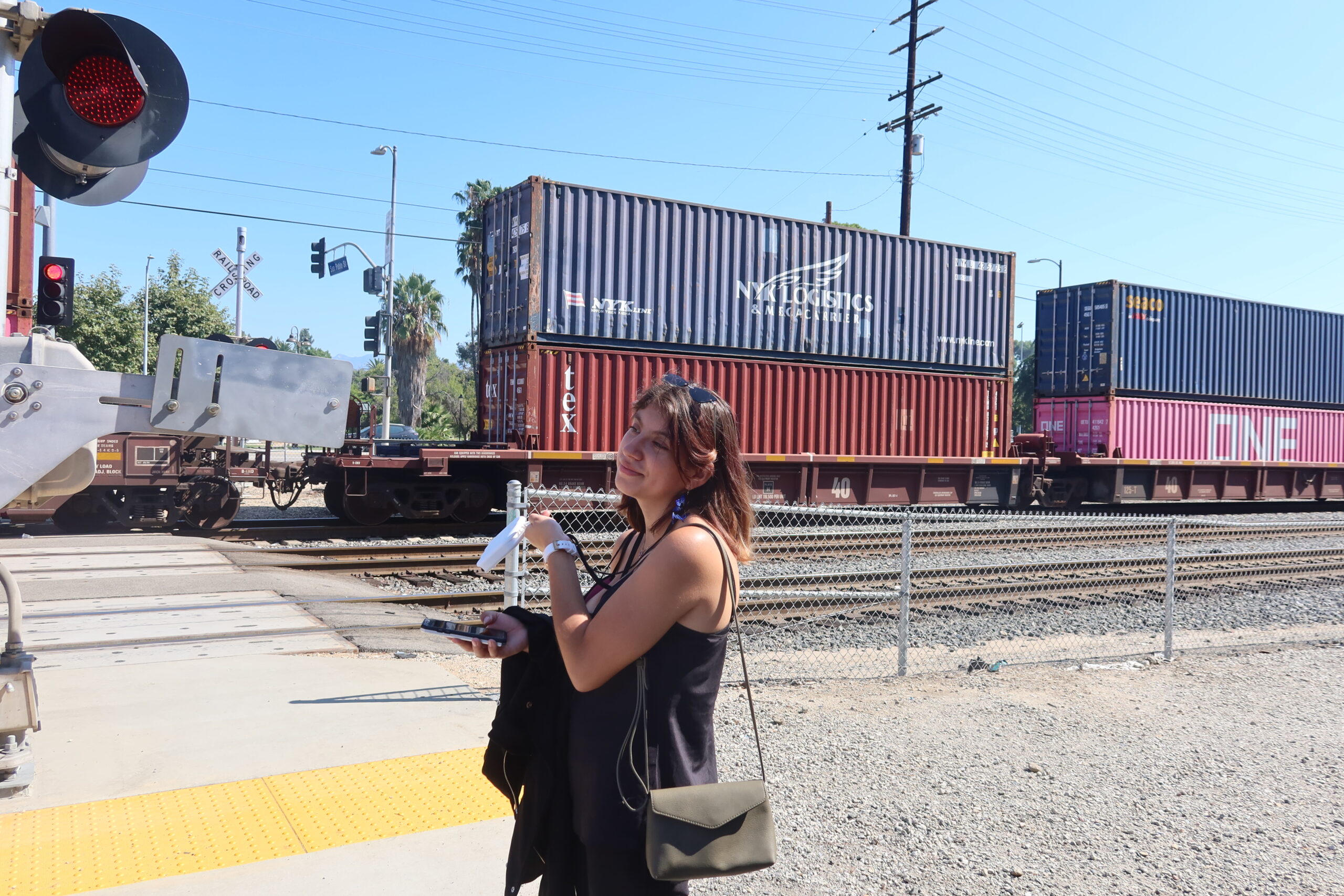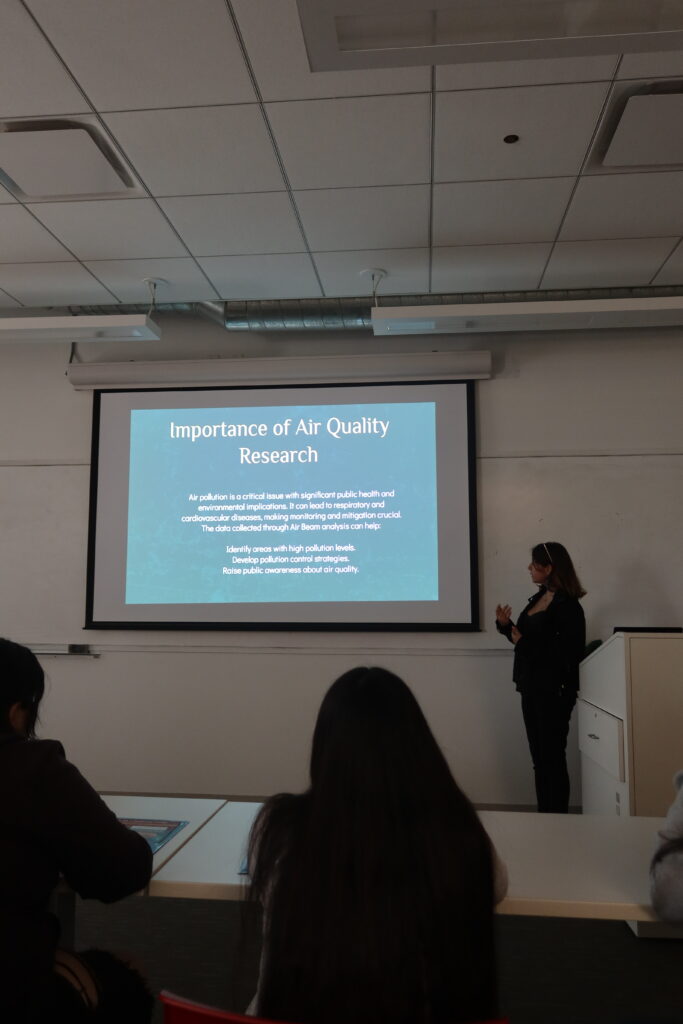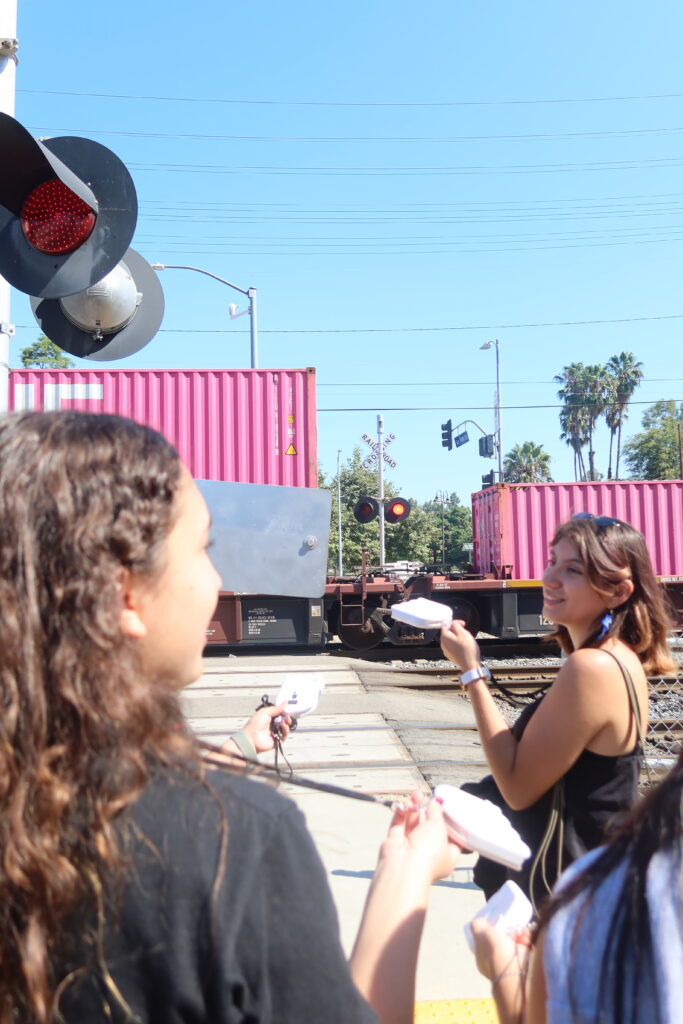

Panolte namonoxtin notka Kimberly Marye Chairez ni nahua. Ni walewa pan Anahuacalmecac International University Preparatory of North America pan matlatle wan omexiutil. Hello everyone my name is Kimberly Marye Chairez I am Nuahuatl. I attend Anahuacalmecac International University Preparatory of North America where I am currently a Senior and a youth leader.
As we all know, air pollution is a significant environmental issue that affects both human health and ecosystems on a global scale. Researchers employ a range of methods, including air quality monitoring tools, data analysis, and modeling, to examine the sources, impacts, and mitigation of air pollution. However, one aspect that is often overlooked in air quality research and potential solutions is Traditional Ecological Knowledge (TEK), which refers to the Traditional knowledge passed down from generation to generation, cultural practices, and beliefs held by indigenous and local communities about their environment. Incorporating TEK into air quality research is crucial as it can provide valuable insights and sustainable solutions based on the wisdom of these communities. My current research project is centered on air quality comparison and analysis using data I've collected over several weeks from the Boyle Heights community.
My primary goal is to compare and analyze this data to gain a better understanding of the air quality in the area, identifying sources of pollution and assessing the impacts on the community. Additionally, I aim to integrate TEK from the Boyle Heights community members, recognizing their unique perspectives on local environmental issues and potential solutions. This approach seeks to empower my community by combining scientific knowledge with the traditional ecological wisdom that I know.
Furthermore, my research projects have several objectives. A primary focus is to help promote a healthier environment within the Boyle Heights community while raising awareness about air quality issues across the broader Los Angeles area. I intend to achieve this by sharing my findings through academic presentations and outreach programs that highlight the importance of incorporating traditional ecological knowledge in air quality research and policymaking. Ultimately, my research aims to bridge the gap between scientific and traditional knowledge, to develop sustainable and effective solutions for improving the well-being of local communities and addressing air pollution.

Have you ever considered the quality of the air you're breathing in? It's not just a thought experiment; it's a critical question that should inspire us to create a healthier environment for ourselves and generations to come. Air pollution is a significant public health and environmental challenge, causing a range of adverse health effects such as respiratory and cardiovascular diseases. The USC Environmental Health Centers, utilizing tools like Air Beams for air quality monitoring, play a crucial role in addressing this issue. By identifying areas with high levels of air pollution and pinpointing sources of pollution, the Centers work to reduce exposure, improve public health, and enable the development of effective pollution control strategies.
Furthermore, the data collected through Air Beams serves as an educational tool, increasing public awareness about the essential nature of air quality. It encourages individuals and communities to take responsibility for their own well-being and the environment. This type of research, supported by statistics, facts, and community engagement, has the potential to have a considerable impact, not only on public health but also environmental sustainability. Ultimately, the work of USC Environmental Health Centers' air quality monitoring promotes public health, fosters sustainable environmental practices, and contributes to the creation of healthier, more vibrant communities. It's a collective effort that we must all be a part of to ensure a better future for ourselves and the planet.
Throughout my research journey, learning how to use air quality monitors has been an incredibly valuable experience. It has involved gaining technical skills, such as monitor calibration, setup, data collection, analysis, and result interpretation, which were initially acquired through training and expert guidance. Once I became proficient, I found the process fairly straightforward to execute independently. These air quality monitors have been extremely helpful in collecting data and quantifying the concentration of specific pollutants in the air, such as particulate matter and the air pollution levels especially in the urban environments of Los Angeles and New York. My data will be used to understand the sources and impacts of air pollution and to identify strategies to mitigate its effects.
As part of my research, I am using my collected data to map areas with high pollution levels and identifying pollution sources, such as factories or high-traffic roads. My experience working with air quality monitors has helped to discern patterns and trends that might not have been evident with a smaller dataset, offering valuable insights into the dynamic nature of air pollution. In this study, the data collected is playing a critical role in investigating the health impacts of air pollution within the community. By cross-referencing air pollution levels with health outcomes, I am able to uncover health risks associated with various levels of air pollution exposure.
Overall, my proficiency in utilizing air quality monitors has enhanced my contribution to research endeavors focused on understanding the complex interplay between air pollution, human health, and the environment. The data collected from these devices can provide valuable insights that can inform policy decisions, improve public health outcomes, and, ultimately, I have been able to contribute to the betterment of our communities. By monitoring air quality, we not only collect critical data but also actively participate in the collective effort to identify pollution sources, track trends, and advocate for policies that safeguard our environment and health.

Being able to be an intern at USC has provided me with hands-on experience applying the skills and knowledge that I have learned in the past to research real-world problems. Through my experience, I was able to observe the practical application of the research and the measurable impact it can have on society. I have also been able to change my perspective as a student researcher due to working with different research methods and techniques that I have not learned in another education environment. Interning has also provided me with super crucial networking opportunities, which I highly value in my life. I was able to connect with professionals in the field and build valuable relationships for future career development. Most importantly I really enjoyed being able to do interdisciplinary collaboration. Working with professionals from different disciplines and backgrounds has broadened my perspectives even more and helped me see the value of interdisciplinary collaboration in research. Combined, these experiences have expanded my research skills and opened up new future research opportunities.
During my internship, I had the opportunity to grow as an Indigenous woman researcher. The experience provided me with practical knowledge, encouraged interdisciplinary collaboration, expanded my professional network, introduced me to new research methods, and sparked my interest in various career paths related to environmental health. As a result, I am motivated to explore different professional directions to determine the best path that aligns with my goals and aspirations. Overall, this internship has transformed my perspective as a student researcher in countless ways.
After conducting an environmental health research project during my internship with USC, there are several next steps and goals that I can take on. Even though my interests and career aspirations are quite different from my internships, I will find a way where I can be able to work with both operations. ( land management, urban planning, connect it with this )
Overall, the next steps and goals after conducting an environmental health research project will be by analyzing data, communicating results, identifying opportunities for further research, considering policy implications, pursuing further education and training, and building connections, you can make a significant impact in the field of environmental health.
Partner with the school: Institutions can partner with the school to offer mentorship, internships, workshops, classes and career opportunities to students. This can help students gain valuable experience and connect with potential experts on the field.
Support community events: Institutions can support community events organized by the school or in the local community. This can help foster a sense of community and promote cultural exchange.
Offer expertise and training: Institutions can offer their expertise and training to the school and community. For example, they can provide workshops on topics such as financial literacy, health and wellness, and career development.
Advocate for the school and community: Institutions can advocate for the school and community by supporting policies and initiatives that benefit them. They can also help raise awareness about the challenges and issues facing the community and work to address them.
Overall, there are many ways in which institutions can support the school and community of Anahuacalmecac and El Sereno. By working together, we can help build a stronger, more vibrant community.